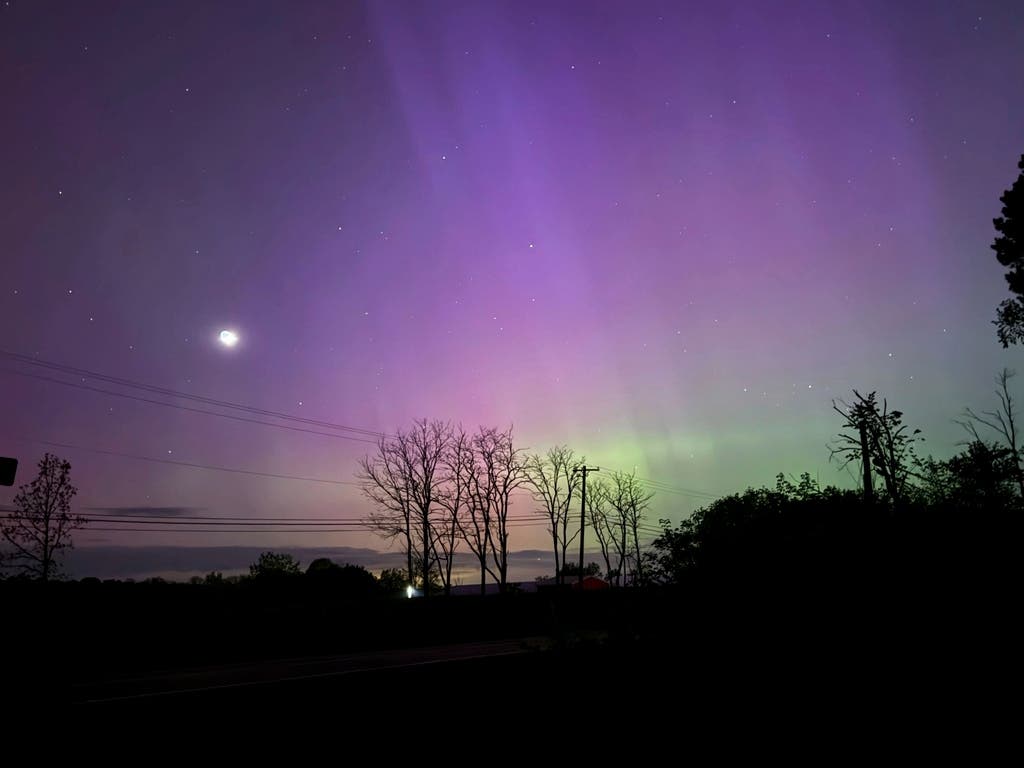Community Corner
‘Head-On’ Aurora Displays May Bring A Shocking Reality To Earth: Study
The same space weather conditions behind the northern lights may cause "interplanetary shocks" strong enough to knock out power grids.

ACROSS AMERICA — Aurora borealis chasing has become a passion for many Americans amid predictions for more frequent northern lights displays in the coming months. But it’s not all pretty lights and oohs and aahs, a new study warns.
The mesmerizing purple, green, yellow and pink hues may portend “interplanetary shocks” that hit Earth’s magnetic field “head-on,” potentially snarling anything conducting electricity, including power transmission lines, oil and gas pipelines, railways and submarine cables.
The study, published Tuesday in the journal Frontiers in Astronomy and Space Sciences, draws a connection between the dazzling light displays and electrical currents created by geomagnetically induced currents, or GICs.
Find out what's happening in Across Americawith free, real-time updates from Patch.
Driven by the same space weather events, auroras are a visible signal of potential ground-reaching electrical currents caused by interplanetary shocks.
Auroras can form when a cloud of magnetic fields and charged particles is ejected from the sun in what are called coronal mass ejections, or CMEs. These clouds stream into space at speeds of up to 1,900 miles per second. Additionally, interplanetary shocks originating from the sun's solar wind can also contribute to the formation of auroras.
Find out what's happening in Across Americawith free, real-time updates from Patch.
Scientists have previously warned the geomagnetic storms that cause auroras could knock out the internet for months as the sun reaches “solar maximum,” or the highest rate of solar activity in its approximately 11-year cycle.
Scientists think that is occurring now. The more frequent auroras — including a spectacular May 11-12 display that prompted the National Oceanic and Atmospheric Administration to issue a geomagnetic storm warning for only the second time in history — also mean more frequent interplanetary shocks.
That display was caused by “magnetically complex” sunspot clusters that sent the northern lights far south to places such as Florida, Texas and Arizona. The storm also caused some disruptions in GPS systems in tractors and caused some airplanes to be rerouted due to voltage irregularities. SpaceX’s Starlink satellite internet services also were affected for a time.
The latest research shows that the strength of the electrical currents is determined by the angle at which the interplanetary shocks hit Earth’s magnetic field.
Being able to forecast the shocks is key to protecting a society highly dependent on any number of devices and systems that conduct electricity, the scientists said.
The study said developing the ability to forecast interplanetary shocks hitting the Earth’s magnetic field “head on” is a key to protecting infrastructure that conducts electricity.
“One thing power infrastructure operators could do to safeguard their equipment is to manage a few specific electric circuits when a shock alert is issued,” lead author Denny Oliveira, of NASA’s Goddard Space Flight Center at the University of Maryland, told BBC’s Science Focus.
“This would prevent geomagnetically induced currents reducing the lifetime of the equipment,” he said.
Interplanetary shocks form in much the same way as a sonic boom when a jet breaks the sound barrier. Depending on the speed at which solar wind approaches Earth, it can exceed what Oliveira called its own “sonic speed barrier” — a magnetic shockwave that can compress Earth’s magnetic field.
Strong interplanetary shocks can damage any infrastructure conducting electricity, but frequent, less intense currents can also cause damage over time, Oliveira told BBC.
“Arguably, the most intense harmful effects on power infrastructure occurred in March 1989 following a severe geomagnetic storm – the Hydro-Quebec system in Canada was shut down for nearly nine hours, leaving millions of people with no electricity,” he said.
“But weaker, more frequent events such as interplanetary shocks can pose threats to ground conductors over time. Our work shows that considerable geoelectric currents occur quite frequently aftershocks, and they deserve attention.”
Get more local news delivered straight to your inbox. Sign up for free Patch newsletters and alerts.